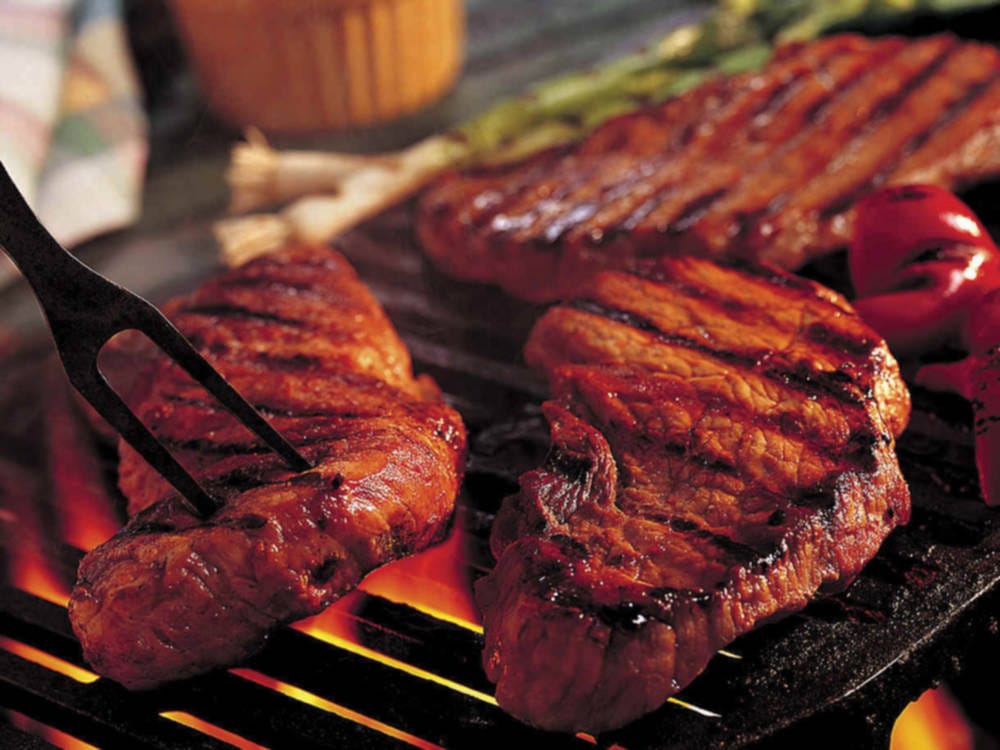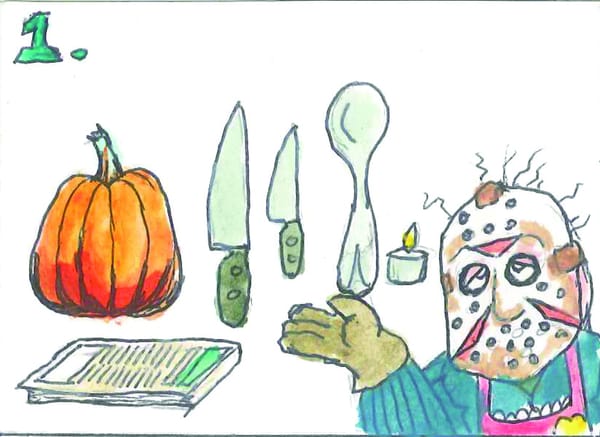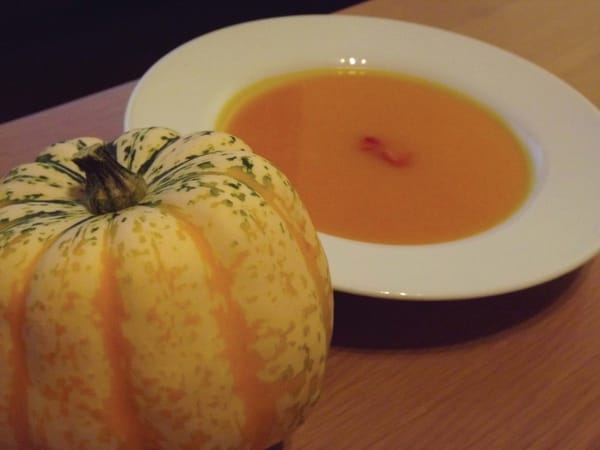Steakday, bloody steakday
AHAAAAAAAAA. It's another Alan Partridge reference

Here during the Halloween season, we’re more than happy to cater to all levels of “vampirism” – and by that, we mean we’re going to scrutinize how to cook the perfect beef steak.
First up, pick your pieces. We don’t discriminate on cut, but one thing we’re certainly picky about is quality. With steak you get what you pay for, so get chummy with your butcher – or, if you must, go for the fresh counter in the supermarket. Whatever you do, don’t you DARE reach for the pre-packed meats in the Tesco chiller cabinets. Dickenson’s on 365 North End Road is one of our favourite picks for quality meat without the crazy price tag – it’s well worth checking out.
A good steak should be deep red in colour and have sufficient fat marbling through it (look for the faint white lines), as this ensures great flavour and that the steak won’t dry out during cooking. Get your butcher to trim the fatty layer on the steak if it’s too thick – you’ll need a bit for flavour, around half a centimetre should do.
Next must-have: ageing. Done properly beforehand by your butcher, this develops the flavor and makes sure your meat will be tender so it won’t turn out the texture of tyre rubber. Ask your butcher how long it’s been hung for – rule of thumb is that you want it aged between 21-35 days.
So you’ve finally brought it home, now it’s time to cook! Whether you’re cooking it immediately or storing it in the fridge for later, it’s crucial to make sure you bring the steak up to room temperature. Otherwise, you’ll be “enjoying” a piece of meat that’s seared outside but stone-cold in the centre.
Grab a heavy-bottomed pan and whack it on high heat. Cast iron is good if you can get it; but as long as it’s got a thick/heavy bottom it’ll do – try to avoid non-stick because it makes it harder for a crust to form. Add a thin layer of oil, and season your steak with salt while you wait for it to get smoking hot so it kick-starts the formation of that lovely crust (no pepper yet, it’ll burn!) Once you see your oil start to smoke a teensy bit, gently place the steak in the pan and let it sizzle.
This is where cooking technique starts to fall into two distinct camps. Some say you shouldn’t touch it until it’s had its few minutes on its first side so you won’t disturb the crust, while others say you should flip it every 15-20 seconds to prevent it from overcooking in the centre. We’ve had success either way without the crust or centre being affected, though we personally prefer flipping every so often – maybe because we’ve just got itchy-fied fingers and can’t be still in the kitchen. It’s your call though.
Now, the part where things commonly go tits-up: done-ness. Judging by the fact that steak thickness/pans/types will vary, we feel it’s quite hit and miss to give you times – a 2cm-thick sirloin needs a different cooking timecompared to a 3cm-thick rib eye. There’s no need to cut into it and risk ruining your steak though – we suggest either the touch test (takes a while to get the hang of, even for chefs), or go all Imperial-geek-style and use a food probe to check internal temperature.
The guidelines are as follows: Bleu (45-49°C): Soft and squishy – you’ll probably get some blood on your hands after touching it. A vampire would be proud. Rare (49-52°C): Soft to the touch. Medium rare (52-64°C): Yields gently when touched. We’re impartial to having our steaks done this way. Medium (57-60°C): Starts to firm up but still yields slightly. Medium well (60-65°C): Feels firm. Well done (>65°C): Hard to touch – dare we say “like a rock”? Also known as a bloody waste of good meat.
When you’re done, take the steak out of the pan and set it aside to rest – residual heat means it’ll carry on cooking for a little bit, and it’s important that you let it rest for around 5 minutes so that the meat has a chance to reabsorb its juices. If you cut it fresh out of the pan you’ll leak said juices and end up eating thick leather.
And there you have it – steak cooked simply in this way means you get to fully enjoy quality meat that hasn’t had its flavours tampered with unnecessary extras. Simply season a little more with pepper and drizzle the cooking and resting juices over. Serve with potatoes on the side (we’re big fans of chunky fries/chips), along with some greens to knock down the guilt factor of this sometimes-tricky-to-make treat.
Enjoy your bloody steak this Halloween!








